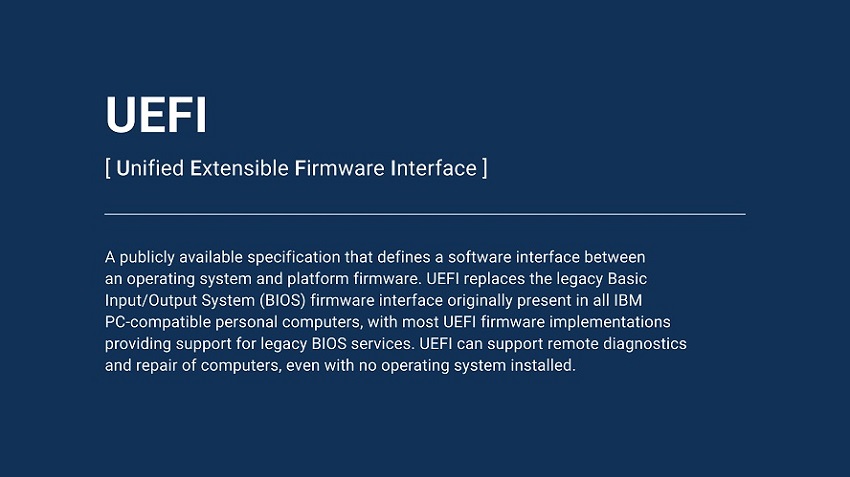
09 Apr All You Need To Know About UEFI
The Unified Extensible Firmware Interface (UEFI) is often confused as BIOS. However, UEFI is a specific interface that helps you power up your operating system. Basically, it’s the thing that breathes fire into your startup process. It does this by acting as an interface between the hardware firmware and your operating system. Here are some things you should know about it, brought to you by online casinos.
What is UEFI?
UEFI is a special standard that sets up an interface between your computer’s operating system and firmware. In brief, it lays out a way your PC’s firmware (the software necessary to run your device hardware) and operating system can communicate with each other.
Moreover, it also supports a wide variety of hardware platforms, including everything from Intel Itanium, x86-32 and x86-64 processors to Das U-Boot.
How do UEFI and BIOS differ from each other?
The BIOS, short for Basic Input and Output, is also a specification responsible for starting up your PC. You can think of it as an earlier, less developed version of UEFI.
From what you must’ve guessed by now, both UEFI and BIOS perform a similar function: they help you power up your CPU. The UEFI, a modern version of BIOS, differs from the BIOS due to its superior functionalities. It gives you faster boot time, while also supporting a larger hard drive.
But how does that happen?
If you’re using a system that uses BIOS, then when you boot it up, the first thing that BIOS does is load up the first sector of your PC’s hard drive, which, in turn, contains the address to other sectors. It also only supports 16-bit mode—which severely limits larger server platforms.
The UEFI, on the other hand, stores up the all information required for startup and initialization in an .efl file. Moreover, it also supports a 64-bit system, therefore having a higher addressable memory. In short, this makes UEFI much faster than its predecessor. It can also provide GUI navigation, as opposed to BIOS, where you can only move through the keyboard.
UEFI also offers the feature of Secure Boot, a security standard designed to make sure your computer start-ups secure. Suffice it to say, this makes UEFI a preferable choice among almost all modern computer systems.
You might not need UEFI
Though all modern computers come equipped with UEFI by default, some reasons why you might choose BIOS over UEFI are:
If you’re beginner and don’t care about messing with any type of firmware, BIOS is for you. If you have < 2 TB per hard disk or partition, you can go with BIOS.
BIOS allows running multiple operating systems without changing any settings This can be a security issue from a modern standpoint, but hey, no hassles for the user on best online casino au.
BIOS provides system information to the operating system. So if your OS runs in 16 bit mode, it does not require writing code for interacting with hardware. It can directly use methods provided by BIOS. Else if the OS switches over to 32bit or 64bit mode, then it needs to provide its own subroutines for interacting with hardware.
If you are someone who prefers a keyboard and text based UI over navigation with a mouse and GUI, then BIOS is for you.
UEFI takes these limitations into account and provides a Legacy mode. In it you can run everything as if you had a BIOS firmware. But keep in mind that Intel has announced that it won’t support traditional BIOS from 2020.

No Comments